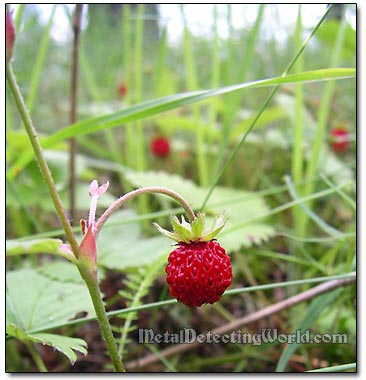WWII Military Relic Hunting in Estonia
As the sky cleared up, and the sunshine filled the day, my mom walked up to me from the forest and took over. To her excitement, right away she detected something.
My Mom Got a Signal
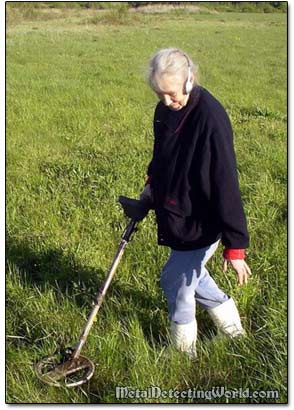
I started digging a hole at the spot she pointed to and recovered a nice axe head, circa 18th century. Nice going! Now my mother was proud to accept an official title "True Relic Hunter."
My Mom's 18th Century Relic Find
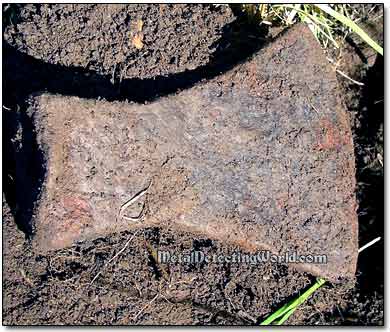
She kept going for a while detecting lots of brass and iron splinters which, of course, I was digging up - that got me a little bit exhausted. For my mother, being at her age of almost 70, just to swing the heavy Explorer's coil was a quite tiresome task, so we decided that after she made a last find, we would go relic hunting in the shaded woods. My mom was going to show me something she discovered there earlier while picking up the stinging-nettle for soup.
Our last find was a brass shell of the light cannon's projectile. I actually was wondering what my mother felt when she saw these reminders of her childhood time. She was 6 when this battle happened in 1944. Her generation was called the "Children of the War" which meant only one thing - their childhood was a tough experience full of struggle and suffering hardship, even for those who were far away from the World War II battlefields.
During the War, my mother was growing up in the Ural Mountains, 2000 km to the east from the WW2 front lines. Thousands of captured German soldiers were transported to the Urals to be used for hard labor building heavy industrial plants and factories. My mom told me that she remembered seeing those soldiers marching by and playing their harmonicas. One of the soldiers smiled at her and gave her a candy.
WW2 Brass Shell of Light Cannon's Projectile
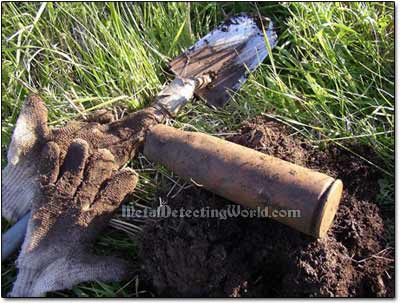
When we got into the forest, my mom led me to the trenches of German defense line where she showed me a wide crater with twisted remains of iron bed on the bottom. There probably was a dug-out here, which was certainly directly hit by the artillery round.
But next to a crater, there was an ugly object, in a shape of a bomb, with three stabilizers. Maybe it was a sea mine or just a buoy. Apparently, the military relic hunters recovered this WW2 artifact earlier and left it because it was too heavy to carry away.
A Sea Mine?
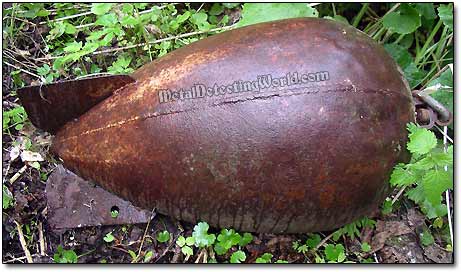
The spot itself was probably littered with iron junk and needed a thorough search, nevertheless, my mom took the Explorer and, while I was taking a picture of a "bomb," went metal detecting at the small opening where there was less grass. And what would anyone expect? She found a horseshoe!
Horseshoe for Good Luck
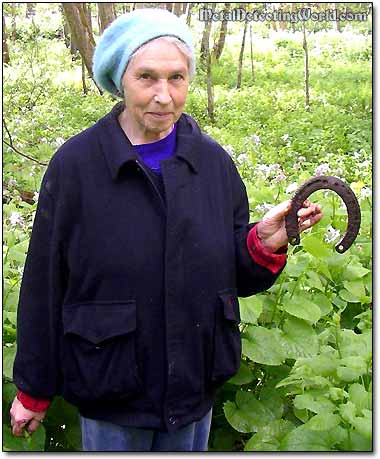
Satisfied with her relic hunting results, my mom decided to head home and prepare a delicious and full of vitamins soup out of fresh stinging-nettle, one of her best culinary creations. She was happy - she beat me in relic hunting!
Wild Strawberries in Estonian Forest
